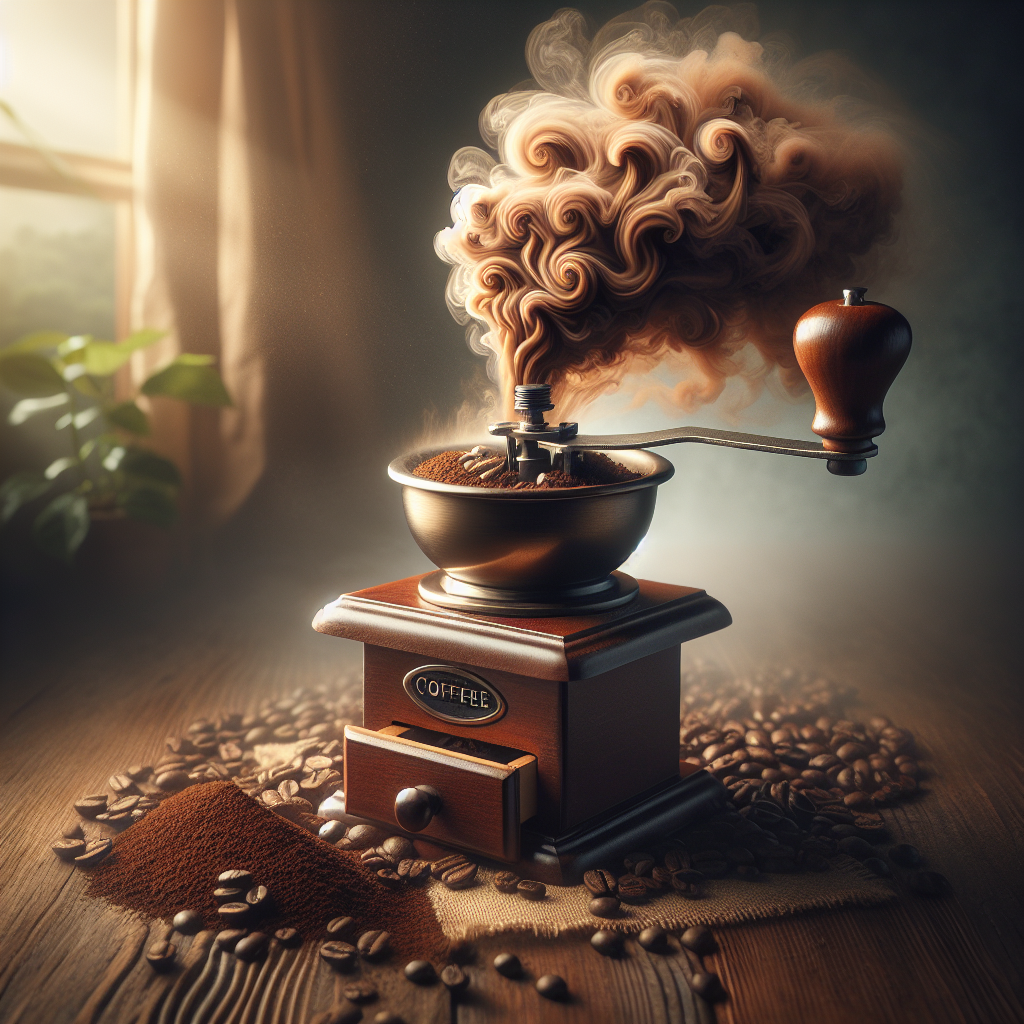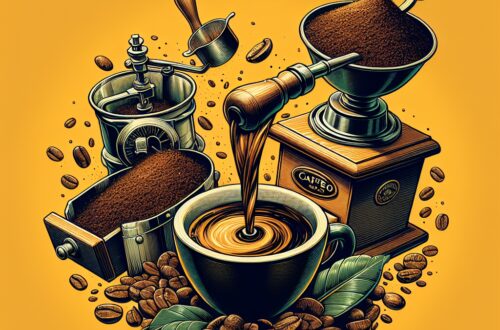“`html
Coffee Uncovered: Answering the Most Pressing Questions About Your Favorite Brew
1. What are the Different Types of Coffee Beans?
Understanding the variety of coffee beans can dramatically enhance your coffee experience. Let’s explore the different types of coffee beans available.
Arabica Beans
Arabica beans originate from Ethiopia and are primarily grown in regions with high altitudes such as Colombia and Brazil. Known for their sweet, soft taste, Arabica beans dominate around 60-70% of global coffee production.
Robusta Beans
Originating from Sub-Saharan Africa, Robusta beans are known for their strong, harsh flavor profile. They are mainly grown in Vietnam and Brazil and are popular in espresso blends due to their rich crema and high caffeine content.
Liberica Beans
Liberica beans have a unique, bold flavor and are predominantly grown in the Philippines and Malaysia. These beans have an irregular shape with a distinct woody and smoky taste that sets them apart.
Excelsa Beans
Excelsa beans are a rare find, primarily grown in Southeast Asia. They contribute a tart, fruity flavor to coffee blends and are appreciated for their complexity and depth.
2. Is Espresso Coffee?
Espresso is a concentrated form of coffee, but what sets it apart from your regular cup of joe? Let’s dive in.
Definition of Espresso
Espresso is a method of brewing coffee by forcing hot water through finely-ground coffee beans under high pressure, usually taking around 25-30 seconds.
Origin and History
The advent of espresso dates back to early 20th-century Italy. Invented by Luigi Bezzera and Desiderio Pavoni, it has become a cornerstone of Italian coffee culture.
Espresso vs. Regular Coffee
Espresso differs significantly in preparation, flavor intensity, and caffeine content compared to regular coffee. While a regular coffee cup can pack more liquid, espresso offers a more concentrated experience.
Common Misconceptions
Contrary to popular belief, espresso isn’t necessarily stronger in caffeine per serving than drip coffee—it’s all about concentration. Learn more about the myths and facts here.
3. How Much Caffeine is in a Cup of Coffee?
Caffeine content varies depending on brewing methods and coffee types.
Standard Measurements
An 8 oz cup of coffee typically contains around 95-200 mg of caffeine. The content can vary based on the type of coffee bean and brewing technique used.
Espresso Caffeine Content
A standard 1 oz shot of espresso has approximately 63 mg of caffeine. Although it’s more concentrated, the smaller serving size means you might consume less caffeine compared to a full cup of drip coffee.
Influence of Brewing Methods
The brewing method significantly affects caffeine content. For example, a French press coffee has more caffeine than instant, but less than a cold brew.
Decaffeinated Coffee
Even decaffeinated coffee contains minimal caffeine—about 2-5 mg per cup. Learn about its health implications and the decaffeination process here.
4. What is the Health Dangers of Drinking Too Much Coffee?
While moderate coffee consumption offers various health benefits, excessive intake poses risks.
Short-term Health Impacts
Overconsumption can lead to anxiety, jitters, insomnia, digestive issues, and heart palpitations. It’s crucial to be mindful of your daily intake to avoid such issues.
Long-term Health Risks
Dependency, bone health concerns, cardiovascular issues, and increased blood pressure can emerge from long-term excessive coffee consumption. Understand your body’s limits and consult healthcare professionals if needed.
Impact on Mental Health
High caffeine consumption can exacerbate anxiety disorders and impact mood, behavior, and cognitive functions. Maintaining a balanced intake is essential for mental well-being.
Recommended Consumption
Safe daily limits generally fall between 300-400 mg of caffeine, comparable to about 3-4 cups of coffee. Always consider age and existing health conditions when determining suitable consumption levels.
5. Is There a Difference Between Males and Females in Relation to Coffee Consumption?
Gender plays a significant role in coffee consumption habits and physiological responses.
Consumption Patterns
Research shows that males generally consume more coffee than females. Additionally, preferred coffee types and times of consumption often vary between genders.
Physiological Differences
Men and women metabolize caffeine differently, influenced by hormonal and metabolic factors. Females may experience more significant impacts on sleep cycles and caffeine tolerance.
Health Effects
Gender-specific health implications include differences in heart health, anxiety levels, and liver function response. Understanding these nuances can help tailor consumption habits to individual needs.
Cultural Differences
Cultural perceptions of coffee’s role in social settings often vary by gender. Marketing strategies and popularity trends also contribute to these differences globally.
6. Why Does My Coffee Sometimes Smell Burnt?
A burnt coffee smell can be due to various reasons—roasting, brewing errors, stale beans, or equipment maintenance.
Roasting Mistakes
Over-roasting beans, improper temperature control, and insufficient cooling can lead to a burnt smell in your coffee.
Brewing Errors
Using boiling water, over-extracting coffee, inappropriate ground size, and incorrect brewing time can contribute to a burnt aroma.
Stale Beans
Old beans lose their freshness and can develop a stale, burnt smell. Proper storage practices are crucial to maintain bean quality.
Equipment Maintenance
Regular cleaning of coffee machines, removing scale, and using quality filters can prevent burnt odors arising from residue and buildup.
7. What Makes a Good Cappuccino?
A well-made cappuccino relies on quality ingredients, proper technique, and presentation.
Quality Ingredients
Use freshly ground coffee, high-quality milk, and clean water. The proportion of milk to coffee is also essential for balancing flavor.
Proper Steaming Technique
Achieving microfoam with the right texture requires correct steaming temperature and technique, often mastered with practice and training.
Espresso Shot Quality
A perfect cappuccino begins with a well-pulled espresso shot. Ensure consistent grind size, accurate tamping, and proper brewing duration.
Presentation and Aesthetics
The classic cappuccino should be visually appealing with creamy foam and sometimes latte art. Serving in the right cup enhances the overall experience.
8. Are There More Flavor Notes in Dark or Light Roast Coffee?
Both dark and light roast coffees offer unique flavor profiles, influenced by their roasting processes.
Flavor Profiles in Dark vs. Light Roast Coffee
| Flavor Notes | Light Roast | Dark Roast |
|---|---|---|
| Fruity | High | Low |
| Acidity | High | Low |
| Bitterness | Low | High |
| Roastiness | Low | High |
Flavor Profiles
Light roast coffees maintain more of the beans’ original flavors, featuring higher acidity and fruity notes. Dark roasts, on the other hand, exhibit low acidity with prominent bitterness and roastiness.
Roasting Process
Light roasts are achieved by shorter roast times, preserving the bean’s intrinsic flavors. Dark roasts undergo a longer, hotter process, intensifying the roast characteristics.
Acidity and Bitterness
Light roasts have higher acidity, contributing to their bright flavors, while dark roasts are known for their bitter, bold taste, making them a matter of personal preference.
Personal Preferences
Choosing between light and dark roast is subjective, influenced by cultural backgrounds and trends. Experimenting with different roasts can help you find your preferred flavor profile. Discover more coffee facts here.
9. Is Drinking Coffee Bad for Your Health?
While coffee offers numerous benefits, it also has drawbacks when consumed excessively.
Pros of Coffee Consumption
Coffee enhances mental alertness, provides antioxidants, reduces the risk of certain diseases like Parkinson’s and Type 2 Diabetes, and aids in weight management.
Cons of Coffee Consumption
Excessive coffee intake can lead to addiction, disrupt sleep, increase anxiety levels, and cause digestive issues. It’s important to moderate consumption to enjoy the benefits while minimizing risks.
Balanced Perspective
A balanced coffee consumption approach is vital. It can improve heart and liver health, but excessive intake may affect bone density. General recommendations suggest not exceeding 4 cups per day.
Populations at Risk
Certain groups, such as pregnant women, people with heart conditions, individuals with anxiety disorders, and young adults, should limit their coffee intake to avoid adverse health effects.
To further explore coffee-related questions and broaden your knowledge, visit our FAQ section here.
“`
Shop at Breville now!
https://breville.oie8.net/oqDqrE
Shop Coffee Machine at Amazon now!
Click here!





